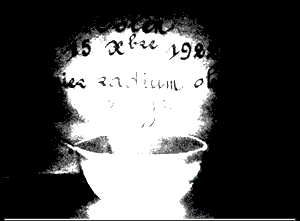 A FIRST!!!! WOMAN WINS NOBEL PRIZE
The 1903 Nobel Prize for Physics was jointly awarded to Pierre and Marie Sklodowska Curie and Henri Becquerel for the discovery of the two radioactive elements, radium and polonium. The Curies isolated the chloride salts of the elements from uranium-free pitchblende through qualitative analysis and then purified these salts using a series of multiple fractional crystallizations. The presence of these salts were detected using the electrometer, invented by Pierre. Because of the low concentration of these newly discovered elements, it required approximately one ton of the pitchblende to produce 0.1 gram of the salt. Much of the work was done as the subject of Mme. Curie's doctoral thesis in Physics in 1898. She coined the term, radioactivity, and named the elements Polonium, after her native country, Poland, and radium for its radiant blue glow. Pierre and Marie's research also included the electric, photographic, luminous, heat, and color effects of radioactivity. Their future goals include plans to isolate and study the properties of the pure metals.
|